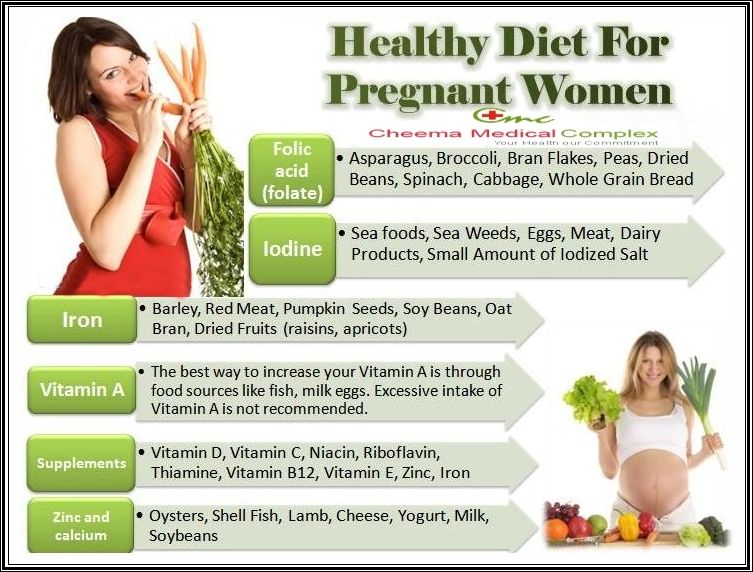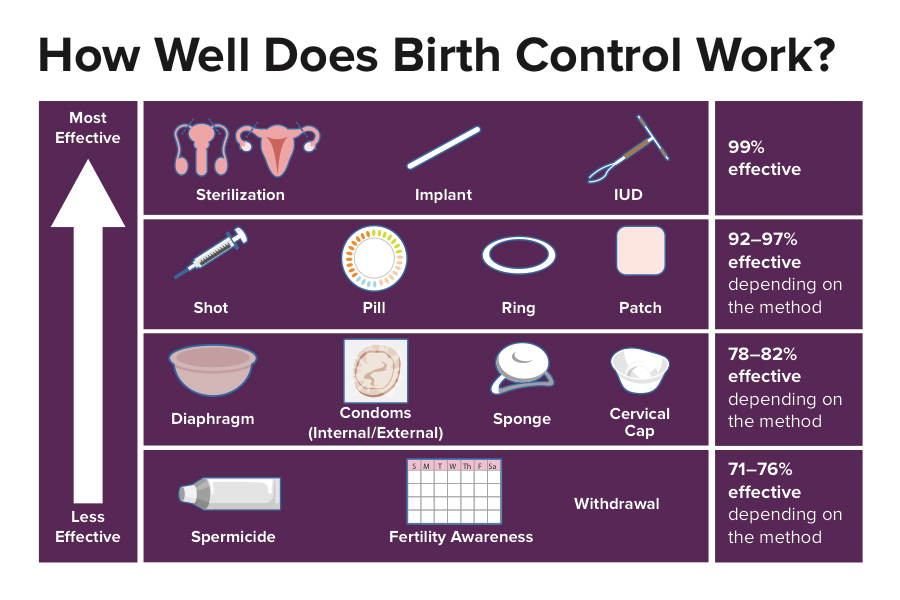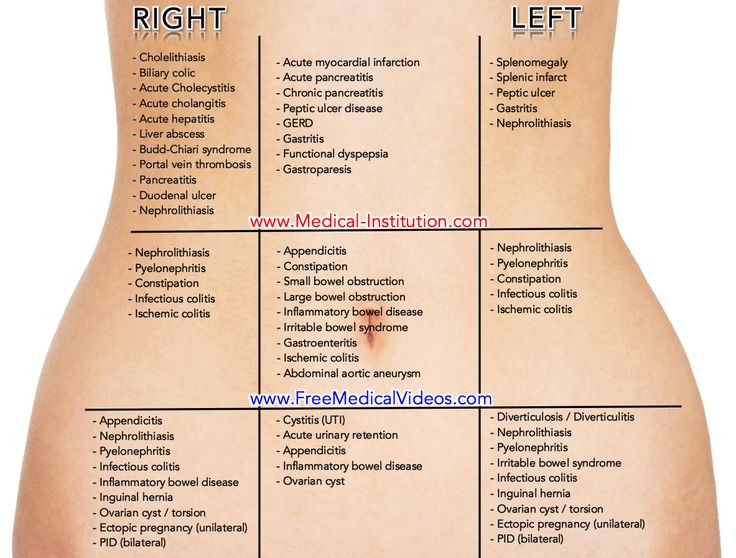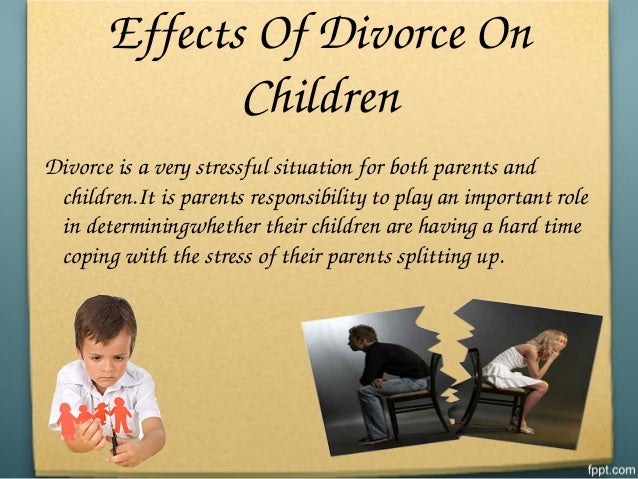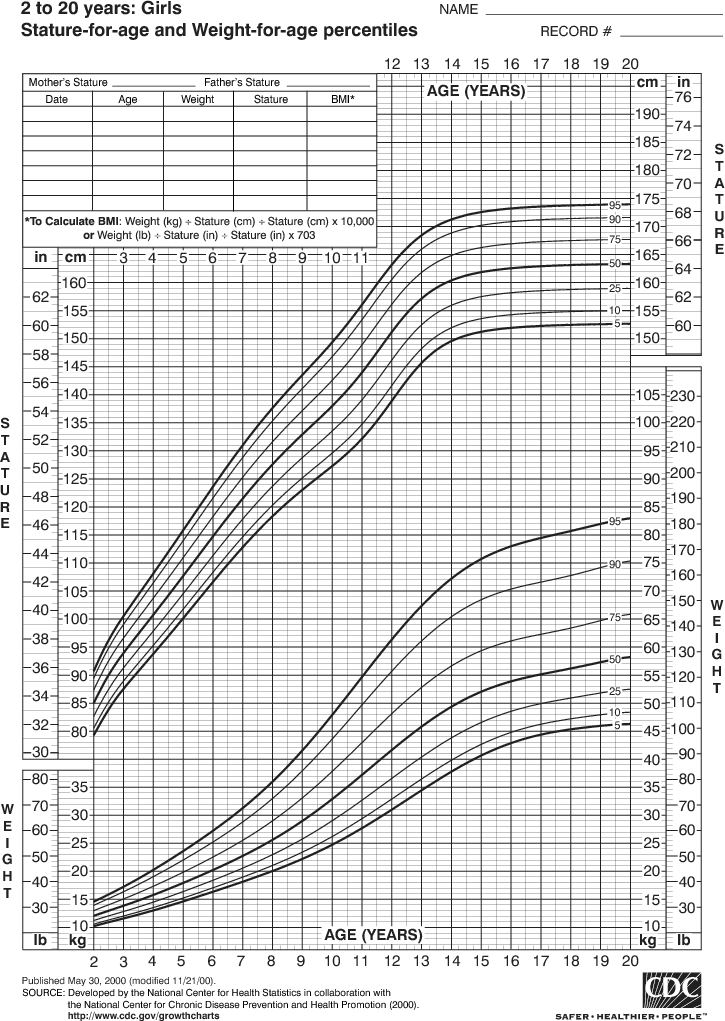Baby boys weight
Average baby weight: Chart and development
Weight is one indicator of good nutrition and physical development. It can therefore be helpful to know about babies’ average weight month by month.
First, it is worth noting that average weight is not “normal” weight. Just like adults, babies come in all shapes and sizes. If a baby’s weight is in a lower percentile, this does not necessarily signal a problem with their growth or physical development. With this in mind, using a weight chart can help a person generally track their baby’s growth.
The Centers for Disease Control and Prevention (CDC) recommend using the World Health Organization (WHO) weight chart for babies up to 2 years of age.
This article describes the average weight of a baby month by month from birth. It also explores what can affect a baby’s weight.
According to the WHO, the average birth weight of a full-term male baby is 7 pounds (lb) 6 ounces (oz), or 3.3 kilograms (kg). The average birth weight of a full-term female is 7 lb 2 oz, or 3. 2 kg.
The average weight of a baby born at 37–40 weeks ranges from 5 lb 8 oz to 8 lb 13 oz. This is 2.5 to 4 kg.
At delivery, experts consider a low birth weight to be less than 5 lb 8 oz, or 2.5 kg.
It is common for babies to lose around 10% of their weight shortly after birth. This decrease is mostly due to fluid loss and usually nothing to worry about. Most babies gain back this weight within 1 week.
Weight charts can help a person tell what percentile their baby’s weight falls into. For example, if their weight is in the 60th percentile, it means that 40% of babies of the same age and sex weigh more, and 60% of these babies weigh less.
This does not necessarily mean that any baby weighs too much or too little. It can simply indicate where a baby’s weight falls on a spectrum.
The chart below shows baby weights in the 50th percentile. This is the average weight. Male babies tend to weigh a little more than female babies, so the chart is divided by sex.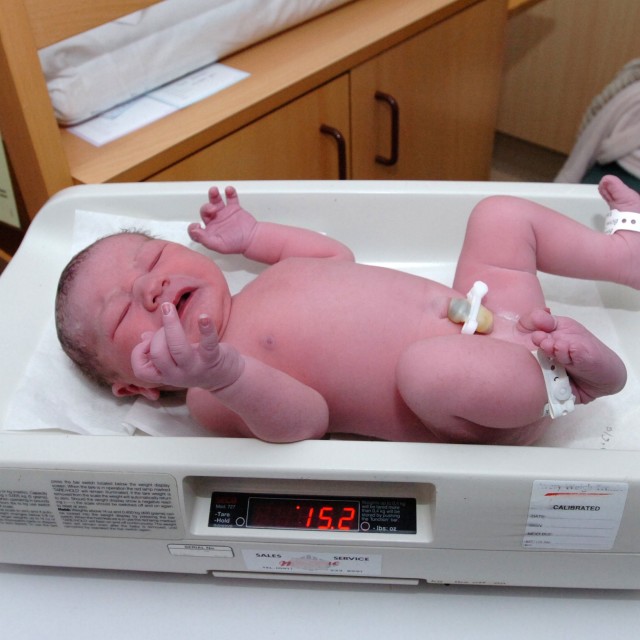
| Baby age | Female 50th percentile weight | Male 50th percentile weight |
| Birth | 7 lb 2 oz (3.2 kg) | 7 lb 6 oz (3.3 kg) |
| 1 month | 9 lb 4 oz (4.2 kg) | 9 lb 14 oz (4.5 kg) |
| 2 months | 11 lb 5 oz (5.1 kg) | 12 lb 4 oz (5.6 kg) |
| 3 months | 12 lb 14 oz (5.8 kg) | 14 lb 1 oz (6.4 kg) |
| 4 months | 14 lb 3 oz (6.4 kg) | 15 lb 7 oz (7.0 kg) |
| 5 months | 15 lb 3 oz (6.9 kg) | 16 lb 9 oz (7.5 kg) |
| 6 months | 16 lb 1 oz (7.3 kg) | 17 lb 8 oz (7.9 kg) |
| 7 months | 16 lb 14 oz (7.6 kg) | 18 lb 5 oz (8.3 kg) |
| 8 months | 17 lb 8 oz (7.9 kg) | 18 lb 15 oz (8.6 kg) |
| 9 months | 18 lb 2 oz (8.2 kg) | 19 lb 10 oz (8.9 kg) |
| 10 months | 18 lb 11 oz (8.5 kg) | 20 lb 3 oz (9. 2 kg) 2 kg) |
| 11 months | 19 lb 4 oz (8.7 kg) | 20 lb 12 oz (9.4 kg) |
| 12 months | 19 lb 12 oz (8.9 kg) | 21 lb 4 oz (9.6 kg) |
Babies grow and gain weight the fastest within the first 6 months of life. Although this can vary, babies tend to gain around 4–7 oz, or 113–200 grams (g), per week in the first 4–6 months.
Weight gain then slows slightly, with an average gain of around 3–5 oz (about 85–140 g) per week when the baby is 6–18 months. On average, babies triple their birth weight by their first birthday.
Growth patterns do not follow a clear schedule, however.
Some babies gain weight steadily and stay in the same percentile, or close to it, for several months. Others gain weight rapidly, signalling a growth spurt, which can happen at any time. This may move a baby into a new weight percentile.
It is important not to focus on weight as the only indicator of physical development. Other measurements of this development include the baby’s length and head circumference.
Considering all three measurements gives doctors an idea about how the baby is growing, compared with other babies of the same age and sex.
Meanwhile, it is also important to keep other developmental milestones in mind. Various checklists of milestones by age are available, including one from Pathways.org, which is endorsed by organizations such as the American Academy of Pediatrics and the National Association of Pediatric Nurse Practitioners.
For anyone looking for more information about what influences the weight of a baby, several factors can be involved, including:
Sex
Male newborns tend to be bigger than female newborns, and they typically gain weight a little faster during infancy.
Nutrition
Weight gain and growth rates can also depend on whether the baby consumes breast milk or formula.
The American Academy of Pediatrics notes that breastfed babies gain weight and grow faster than formula-fed babies during the first 6 months.
However, that rate can shift during the next 6 months. Breastfed babies may gain weight and grow more slowly than formula-fed babies when they are aged 6 months to 1 year.
Breastfed babies may gain weight and grow more slowly than formula-fed babies when they are aged 6 months to 1 year.
Medical conditions
Underlying health issues can cause a baby to gain weight more slowly. For example, babies with congenital heart irregularities may gain weight at a slower rate than babies without this condition.
Health issues that affect nutrient absorption or digestion, such as celiac disease, may also lead to slow weight gain.
Prematurity
Babies born prematurely may grow and gain weight more slowly during their first year than babies born at full term.
However, many babies born prematurely gain weight rapidly and “catch up” by about their first birthday.
The average birth weight for full-term male babies is 7 lb 6 oz, or 3.3 kg. For female babies born full-term, the average birth weight is 7 lb 2 oz, or 3.2 kg.
Baby weight charts can help a healthcare team track a baby’s physical development by comparing the baby’s weight with the weights of others of the same age and sex.
Still, a doctor usually looks for steady growth, rather than a target percentile, when assessing a baby’s physical development. And even if a baby’s weight is in a lower percentile, they will not necessarily be a small adult — just as longer babies do not necessarily become tall adults.
Knowing about average weights by month can help people gauge their babies’ physical development, but doctors also look for other important indicators, such as length and head circumference.
Healthcare professionals also take into account whether a baby is generally hitting other milestones on time. And by taking a detailed medical history, they can rule out any medical conditions or nutritional considerations that may be preventing a baby from gaining weight appropriately.
Height and weight chart from newborn to 8 years: Average child and baby weight by age
In the United States, the average baby weighs just over 7 pounds (3 kg) at birth. Where does your child fall on the growth charts and what happens next? This article covers average height and weight for kids from birth to age 8, factors that affect growth, and what growth percentiles mean.
Lots of parents wonder whether their child is bigger or smaller than other kids their age. The charts below give you an idea of how your child's weight and height (or length, for babies) compare to the average weight and height of kids in their age group.
The numbers in these charts are just a benchmark. It's likely your child's weight and height are higher or lower than the average. If so, don't worry – it doesn't mean there's anything wrong.
Children grow at different rates, and it's normal for weight and height to vary significantly between kids of the same age. What's more important is that your child is growing steadily.
The doctor will weigh and measure your child during each well-child visit to make sure their growth is on track. (They'll also measure your baby's head circumference, which provides information about their growing brain). Be sure to talk with the doctor if you have any concerns about your child's growth.
For more, personalized information about how your child compares to other children in size, and to track your child's height and weight over time, check out our child height and weight tracker.
Average baby weight and length chart by month
In the United States, the average baby weighs just over 7 pounds at birth. Girls (at 7 pounds, 1 ounce/3.2 kg) are a bit smaller than boys (at 7 pounds 8 ounces/3.4 kg) on arrival. The average newborn is 19 1/2 inches (49.5 cm) long, with girls measuring 19.4 inches (49.2 cm) and boys measuring 19.7 inches (49.9 cm).
While most babies lose weight during the first few days of life, within a couple of weeks they're back to their birth weight. Until 3 months old, most babies gain about an ounce each day. By 4 months old, most babies have doubled their birth weight, and by 1 year, most have tripled it. Most babies also grow about 10 inches (25 cm) by their first birthday.
Keep in mind that babies and children have growth spurts, too – which means that growth isn't always a gradual, predictable process. Just when you start to wonder whether your child has grown enough lately, they may climb the charts!
The data in the charts below comes from the World Health Organization (WHO) for children younger than 2 and the U. S. Centers for Disease Control and Prevention (CDC) for children age 2 and older.
S. Centers for Disease Control and Prevention (CDC) for children age 2 and older.
Advertisement | page continues below
The CDC recommends that healthcare providers use the WHO growth charts to monitor growth for infants and children ages 0 to 2 years, and use the CDC growth charts for those 2 years and older. The WHO charts are based on healthy growth patterns for breastfed children and are endorsed by the CDC and the American Academy of Pediatrics.
Quick tip: For babies born prematurely, use their adjusted age rather than chronological age when you look up their numbers on this chart. (Adjusted age is the age your baby would be if they had been born full term.)
| Age | Size | Boys | Girls |
|---|---|---|---|
| Birth | Weight | 7 lb 8 oz (3.4 kg) | 7 lb 1oz (3.2 kg) |
| Length | 19.7 inches (49.9 cm) | 19.4 inches (49. 2 cm) 2 cm) | |
| 1 month | Weight | 9 lb 15 oz (4.5 kg) | 9 lb 4 oz (4.2 kg) |
| Length | 21.5 in (54.7 cm) | 21.1 in (53.7 cm) | |
| 2 months | Weight | 12 lb 6 oz (5.6 kg) | 11 lb 4 oz (5.1 kg) |
| Length | 23 in (58.4 cm) | 22.5 in (57.1 cm) | |
| 3 months | Weight | 14 lb 2 oz (6.4 kg) | 13 lb (5.9 kg) |
| Length | 24.2 in (61.4 cm) | 23.5 in (59.8 cm) | |
| 4 months | Weight | 15 lb 7 oz (7 kg) | 14 lb 2 oz (6. 4 kg) 4 kg) |
| Length | 25.2 in (63.9 cm) | 24.5 in (62.1 cm) | |
| 5 months | Weight | 16 lb 9 oz (7.5 kg) | 15 lb 3 oz (6.9 kg) |
| Length | 26 in (65.9 cm) | 25.2 in (64 cm) | |
| 6 months | Weight | 17 lb 7 oz (7.9 kg) | 16 lb 2 oz (7.3 kg) |
| Length | 26.6 in (67.6 cm) | 25.9 in (65.7 cm) | |
| 7 months | Weight | 18 lb 5 oz (8.3 kg) | 16 lb 12 oz (7.6 kg) |
| Length | 27.2 in (69.2 cm) | 26.5 in (67.3 cm) | |
| 8 months | Weight | 18 lb 15 oz (8. 6 kg) 6 kg) | 17 lb 10 oz (8 kg) |
| Length | 27.8 in (70.6 cm) | 27.1 in (68.8 cm) | |
| 9 months | Weight | 19 lb 10 oz (8.9 kg) | 18 lb 1 oz (8.2 kg) |
| Length | 28.4 in (72 cm) | 27.6 in (70.1 cm) | |
| 10 months | Weight | 20 lb 5 oz (9.2 kg) | 18 lb 12 oz (8.5 kg) |
| Length | 28.9 in (73.3 cm) | 28.2 in (71.5 cm) | |
| 11 months | Weight | 20 lb 12 oz (9.4 kg) | 19 lb 3 oz (8.7 kg) |
| Length | 29.3 in (74.5 cm) | 28.7 in (72.8 cm) | |
Want more information about how babies grow and develop before age 1? Find out about your baby's developmental milestones and how much your baby will grow in the first year. You can also check whether your newborn's weight gain is healthy or not.
You can also check whether your newborn's weight gain is healthy or not.
Typical toddler weights and heights
Between 12 and 24 months, most toddlers grow about 4 or 5 inches (10 to 12 cm) and gain about 5 pounds (2.27 kg). Your little one will start looking more like a child than a baby as they start to slim down a bit and become more muscular.
| Age | Size | Boys | Girls |
|---|---|---|---|
| 12 months | Weight | 21 lb 6 oz (9.7 kg) | 19 lb 14 oz (9 kg) |
| Height | 29.8 in (75.8 cm) | 29.1 in (74 cm) | |
| 13 months | Weight | 21 lb 13 oz (9.9 kg) | 20 lb 5 oz (9.2 kg) |
| Height | 30.3 in (76.9) cm | 29.6 in (75.2cm) | |
| 14 months | Weight | 22 lb 4 oz (10. | 20 lb 12 oz (9.4 kg) |
| Height | 30.8 in (78.1 cm) | 30.1 in (76.4 cm) | |
| 15 months | Weight | 22 lb 11 oz (10.3 kg) | 21 lb 3 oz (9.6 kg) |
| Height | 31.2 in (79.2 cm) | 30.5 in (77.5 cm) | |
| 16 months | Weight | 23 lb 2 oz (10.5 kg) | 21 lb 10 oz (9.8 kg) |
| Height | 31.6 in (80.2 cm) | 31 in (78.6 cm) | |
| 17 months | Weight | 23 lb 9 oz (10.7 kg) | 22 lb 1 oz (10 kg) |
| Height | 32 in (81. | 31.4 in (79.7 cm) | |
| 18 months | Weight | 24 lb 1 oz (10.9 kg) | 22 lb 8 oz (10.2 kg) |
| Height | 32.4 in (82.3 cm) | 31.8 in (80.7 cm) | |
| 19 months | Weight | 24 lb 8 oz (11.1 kg) | 22 lb 15 oz (10.4 kg) |
| Height | 32.8 in (83.2 cm) | 32.2 in (81.7 cm) | |
| 20 months | Weight | 25 lb 2 oz (11.4 kg) | 23 lb 9 oz (10.7 kg) |
| Height | 33.2 in (84.2 cm) | 32.6 in (82.7 cm) | |
| 21 months | Weight | 25 lb 9 oz (11. | 24 lb 1 oz (10.9 kg) |
| Height | 33.5 in (85.1 cm) | 33 in (83.7 cm) | |
| 22 months | Weight | 26 lb (11.8 kg) | 24 lb 8 oz (11.1 kg) |
| Height | 33.9 in (86.1 cm) | 33.3 in (84.6 cm) | |
| 23 months | Weight | 26 lb 7 oz (12 kg) | 24 lb 15 oz (11.3 kg) |
| Height | 34.2 in (86.9 cm) | 33.7 in (85.5 cm) | |
Preschooler weight and height chart
Most children gain about 4.4 pounds each year between 2 years old and puberty. They also grow 3 inches (8 cm) in height between 2 and 3 years old, and 2 3/4 inches (7 cm) between 3 and 4 years old. You might have trouble visualizing it, but by 24 to 30 months, children reach half their adult height.
You might have trouble visualizing it, but by 24 to 30 months, children reach half their adult height.
| Age | Size | Boys | Girls |
|---|---|---|---|
| 2 years | Weight | 28 lb (12.7 kg) | 26 lb 11 oz (12.1 kg) |
| Height | 2 ft 10 in (86.5 cm) | 2 ft 9.5 in (85 cm) | |
| 2.5 years | Weight | 30 pounds (13.6 kg) | 28 lb 11 oz (13 kg) |
| Height | 3 ft (91.3 cm) | 2 ft 11.5 in (90.3 cm) | |
| 3 years | Weight | 31 lb 12oz (14.4 kg) | 30 lb 10 oz (13.9 kg) |
| Height | 3 ft 1.5 in (95.3 cm) | 3 ft 1 in (94.2 cm) | |
3. 5 years 5 years | Weight | 33 lb 12 oz (15.3 kg) | 32 lb 14 oz (14.9 kg) |
| Height | 3 ft 3 in (99 cm) | 3 ft 2.5 in (97.7 cm) | |
| 4 years | Weight | 35 lb 15 oz (16.3 kg) | 35 lb 1 oz (15.9 kg) |
| Height | 3 ft 4.5 in (102.5 cm) | 3 ft 4 in (101 cm) | |
| 4.5 years | Weight | 38 lb 6 oz (17.4 kg) | 37 lb 4 oz (16.9 kg) |
| Height | 3 ft 5.5 in (105.9 cm) | 3 ft 5 in (104.5 cm) | |
Big kid weight and height averages
Between the ages of 5 and 8 years, children grow about 2 to 3 inches (5 to 8 cm) per year. They also gain between 4 and 7 pounds (2 to 3 kg) per year between the ages of 6 and puberty.
They also gain between 4 and 7 pounds (2 to 3 kg) per year between the ages of 6 and puberty.
| Age | Size | Boys | Girls |
|---|---|---|---|
| 5 years | Weight | 40 lb 13 oz (18.5 kg) | 39 lb 11 oz (18 kg) |
| Height | 3 ft 7 in (109.2 cm) | 3 ft 6.5 in (108 cm) | |
| 6 years | Weight | 45 lb 14 oz (20.8 kg) | 44 lb 12 oz (20.3 kg) |
| Height | 3 ft 9.5 in (115.7 cm) | 3 ft 9 in (115 cm) | |
| 7 years | Weight | 51 lb 2 oz (23.2 kg) | 50 lb 8 oz (22.9 kg) |
| Height | 4 ft (122 cm) | 4 ft (121.8 cm) | |
| 8 years | Weight | 56 lb 14 oz (25. 8 kg) 8 kg) | 56 lb 14 oz (25.8 kg) |
| Height | 4 ft 2.5 in (128.1 cm) | 4 ft 2.5 in (127.8 cm) | |
What factors can affect my child's weight and height?
Your child's genes are the biggest factor determining how tall they'll get and how heavy they'll be. But there are other factors, too:
- Gestation. If your baby arrived after their due date, they may be larger than average, and if they were born prematurely, they'll probably be smaller. (Because multiples are typically born early, they tend to be smaller, too.)
- Your pregnancy health. If you smoked, used drugs, or didn't eat well during pregnancy, you're more likely to give birth to a smaller baby. If you gained a great deal of weight during pregnancy or had gestational diabetes, you're more likely to give birth to a larger baby.
- Sex: Baby girls are typically a little smaller (length and weight) at birth than baby boys.

- Breastfed or formula fed. In their first year, breastfed babies gain weight more slowly than formula-fed babies. (For the first few months, the breastfed babies actually grow more quickly, but by 3 months old this changes.) By age 2, breastfed and formula-fed babies weigh about the same.
- Hormones. If your child has a hormone imbalance, such as low growth hormone levels or a low thyroid level, it could slow their growth.
- Medications. Certain medications, such as regular use of corticosteroids, might slow growth.
- Health issues. If your child has a chronic illness (such as cancer, kidney disease, or cystic fibrosis), or any disorder affecting their ability to eat or absorb nutrients (such as gastrointestinal problems), their growth might be slowed.
- Genetic conditions. Your child's general genetic makeup affects their growth. So could having certain genetic conditions – such as Down syndrome, Noonan syndrome, or Turner syndrome.

- Sleep. Growth spurts in babies are related to increases in sleep. One study found that getting more sleep directly increases a baby's probability of growing more in length. In fact, growth spurts occurred within 48 hours after added sleep.
What do growth chart percentiles mean?
Baby growth charts give you a general idea of how your child is growing. They use percentiles to compare your baby's growth to other babies of the same age and sex.
The charts show the height and weight (or length, for babies) for children of both sexes in the 50th percentile, which is the average. Anything higher means your child is larger than average. Anything lower means they're smaller than average.
For example, the average weight for a 2-month-old girl is 11 pounds 4 ounces. If your 2-month-old daughter weighs 13 pounds, she's heavier than average. The average length is 22.5 inches, so if your daughter is 20 inches long at 2 months, she's shorter than average.
Your doctor will normally calculate your child's weight and height as a percentile. If your child is in the 75th percentile for weight, for example, that means 75 percent of children their age and sex weigh less, and 25 percent weigh more.
Your child's chart numbers can provide their doctor with valuable information at each well-child visit. The doctor will be looking to see that your child's growing appropriately, that there aren't dramatic changes (from the 75th percentile to the 25th percentile, for example), and that your child's numbers are in an appropriate range for their age.
If one of your child's measurements is below the 10th percentile or above the 90th percentile, their doctor may want to determine why and monitor your child's growth carefully. In general, though, your child's growth pattern over time is more important than where they fall on the chart in terms of percentages.
Learn more:
- Try our child height predictor
- The best way to measure your child
- Failure to gain weight in babies
- Failure to gain weight in children
- Helping an overweight child
- Chart: Average fetal length and weight
Tables of weight and height of the child by months and by years.
 For boys and for girls.
For boys and for girls. The height and weight of a child are the main indicators of his physical development. That is why immediately after the birth of the baby, it is imperative to measure the weight of his body and the length of the body and continue to weigh himself daily at the same time until discharge from the hospital.
There are many factors that affect the physical development of a child, for example:0010
How to understand what is the norm?
The All-Russian Health Organization recommended special tables for matching the height and weight of children, or as they are called, centile tables. At each examination, the pediatrician measures the height and weight of the child, compares the obtained values \u200b\u200bwith the standard indicators.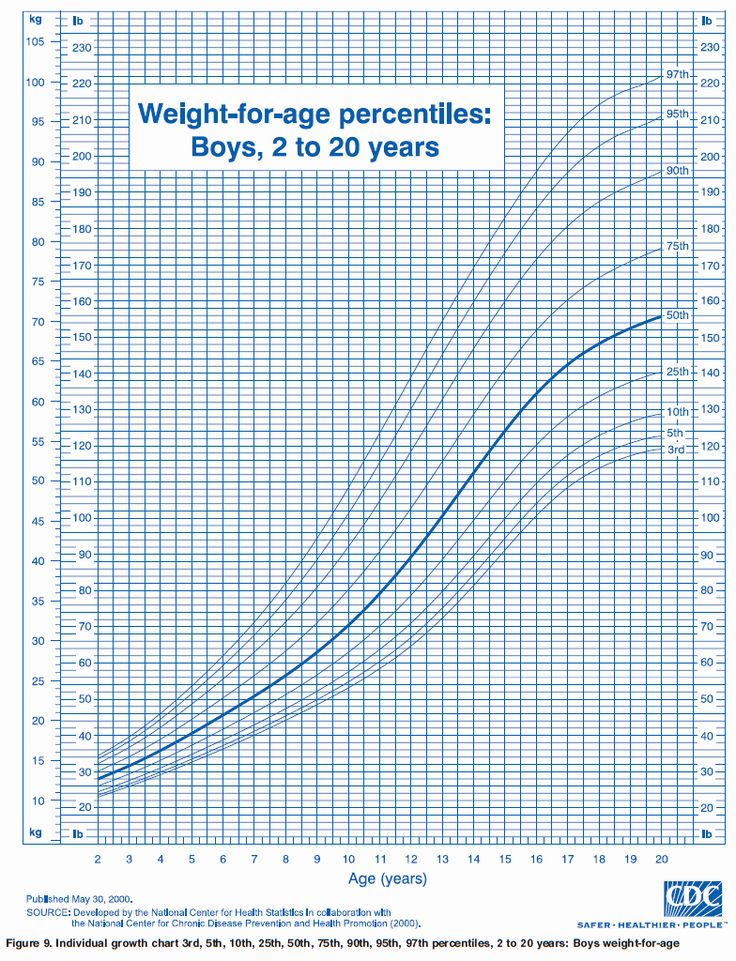 Such tables allow you to identify obvious pathologies, for a more accurate analysis, the doctor calculates additional indicators using special formulas.
Such tables allow you to identify obvious pathologies, for a more accurate analysis, the doctor calculates additional indicators using special formulas.
Monthly infant weight and height chart (up to 1 year)
The table shows the average height and weight of infants (under 1 year of age) by month for boys and girls.
| Age | Girls | Boys | ||||||
| , kg | 9000 9000, KG, KG | 9000 9000, KG, KG 9000 9000, KG, KG 9,000|||||||
| Newborns | 3.33 ± 0.44 | 49.50 ± 1.63 | 3.53 ± 0.45 | 50.43 ± 1.89 | 1 month | 4.15 ± 0.54 | 53.51 ± 2.13 | 4.32 ± 0.64 | 54. 53 ± 2.32 53 ± 2.32 |
| 2 months | 5.01 ± 0.56 | 56.95 ± 2.18 | 5 .29 ± 0.76 | 57.71 ± 2.48 | ||||
| 3 months | 6.07 ± 0.58 | 60.29 ± 2.08 903 | 61.30 ± 2.41 | |||||
| 4 months | 6.55 ± 0.79 | 62.15 ± 2.49 | 6.87 ± 0.74 | 63.79 ± 2.68 | ||||
| 9000 3 months | 7.38 ± 0.96 | 63.98 ± 2.49 | 7.82 ± 0.80 | 66.92 ± 1.99 | ||||
| 6 months | 7.97 ± 0.92 | 66.60 ± 2.44 | 8.77 ± 0.78 | 67.995 ± 2.24 80049 7 months | 8.25 ± 0.95 | 67.44 ± 2.64 | 8.92 ± 1.11 | 69.56 ± 2.61 |
| 9000 3 months 9000 | 8.35 ± 1.10 | 69.84 ± 2.07 | 9.46 ± 0.98 | 71.17 ± 2.24 | ||||
| 9000 9 months | 9. 28 ± 1 .01 28 ± 1 .01 | 70.69 ± 2.21 | 9.89 ± 1.18 | 72.84 ± 2.71 | ||||
| 10 months | 9.52 ± 1.3572.11 ± 2.86 | 10.35 ± 1.12 | 73.91 ± 2.65 | |||||
| 11 months | 9.80 ± 0, 0, 80 | 73.60 ± 2.73 | 10.47 ± 0.98 | 74.90 ± 2.55 | ||||
| 10.04 ± 1.16 | 74.78 ± 2.54 | 10.66 ± 1.21 | 75.78 ± 2.79 | |||||
Table of weight and height of the child by years (from 1 to 18 years)
weight of the child by years aged 1 to 18 years for boys and girls.
| Age | Girls | Boys | |||||
| , kg | 9000 9000, KG, KG | 9000 9000, KG, KG 9000 9000, KG, KG||||||
| 1 year 3 months | 10.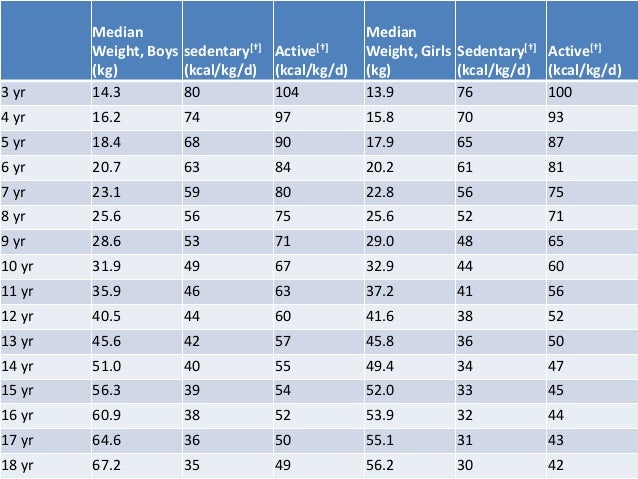 52 ± 1.27 52 ± 1.27 | 76.97 ± 3.00 | 11.40 ± 1.30 | 79.45 ± 3.56 | |||
| 1 year 6 months | 11.40 ± 1.12 | 80.80 ± 2.98 | 11.80 ± 1.18 | 81.73 ± 3.34 | |||
| 9000. 1 year | 12.27 ± 1.37 | 83.75 ± 3.57 | 12.67 ± 1.41 | 84.51 ± 2.85 | |||
| 12.6.63 ± 1.76 | 86.13 ± 3.87 | 13.04 ± 1.23 | 88.27 ± 3.70 | ||||
| 2 years 6 months | 13.93 ± 1.60 | 91.20 ± 4,28 | 13.96 ± 1.27 | 81.85 ± 3.78 | |||
| 3 years old | 14.85 ± 1.53 | 97.27 ± 3 , 78 | 14.95 ± 1.68 | 95.72 ± 3.68 | |||
| 4 years | 16.02 ± 2.30 | 100.56 ± 5.76 | 17, 14 ± 2.18 | 102.44 ± 4.74 | |||
| 5 years | 18.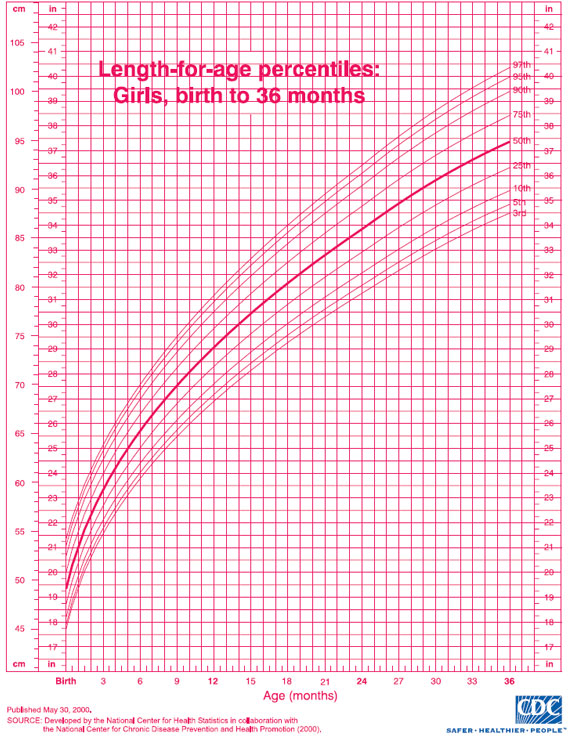 48 ± 2.44 48 ± 2.44 | 109.00 ± 4.72 038 | 110.40 ± 5.14 | | ||||
| 6 years | 21.34 ± 3.14 | 115.70 ± 4.32 | 21.20 | 115.98 ± 5.51 | |||
| 7 years old | 24.66 ± 4.08 | 123.60 ± 5.50 | 24.92 ± 4.44 | 123.88 ± 5.40 | |||
| 8 years | 27.48 ± 4.92 | 129.00 ± 5.48 | 27.86 ± 4.72 | 129.94 ± 5.70 | 0049 9 years old31.02 ± 5,92 | 136.96 ± 6.10 | 30.60 ± 5.86 | 9004.64 ± 6.12
| 10 years 10 years old | 888888888834.32 ± 6.40 | 140.30 ± 6.30 | 33.76 ± 5.26 | 140.33 ± 5.60 | |||
| years 11 years | 37.40 ± 7 06 | 144.58 ± 7.08 | 35.44 ± 6.64 | 143.38 ± 5.72 | |||
| 12 years 9004 038 | 152. 81 ± 7.01 81 ± 7.01 | 41.25 ± 7.40 | 150.05 ± 6.40 | ||||
| 48.70 ± 9.16 | 156.85 ± 6.20 | 45.85 ± 8.26 | 156.65 ± 8.00 | ||||
| 14 years old | 51.32 ± 7.30 | 160.86 ± 6.36 | 51 , 18 ± 7.34 | 162.62 ± 7.34 | |||
| 15 years old | 56.65 ± 9.85 | 161.80 ± 7.40 | 56.50 ± 13.50 ± 13.50 | 168.10 ± 9.50 | |||
| 16 years old | 58.00 ± 9.60 | 162.70 ± 7.50 | 62.40 ± 14.10 | 172.60 ± 9.40 | |||
| 17 years old | 58.60 ± 9.40 | 163.10 ± 7,30 | 67.35 ± 12.75 | 176.30 | |||
Deviations of weight or height from tabular values
There is no need to panic if there is a minimal discrepancy with the indicated values in the table, and here's why:
- First of all, the child's height and weight charts contain reference indicators , what should ideally be the weight and height of the child, without taking into account many other factors .
 Sometimes parents of premature babies mistakenly use a standard table for comparison, while there are special tables for assessing the development of children born prematurely.
Sometimes parents of premature babies mistakenly use a standard table for comparison, while there are special tables for assessing the development of children born prematurely. - The rate of growth and weight gain for each child is unique . In the first year of life, babies develop in leaps and bounds. For example, during the period of introducing complementary foods, the weight of the baby may not reach the “norm” due to adaptation to a new type of food, and not because of pathology.
This does not mean that deviations from the norm should be ignored , but it is better to regard them as an occasion to pay attention and consult a specialist in order to identify possible health problems, or to make sure that they are not present.
What can cause obvious deviations from the norm?
Earlier we talked about minor deviations from the norm and that there is no need to be scared if your child is not growing and gaining weight strictly according to the chart.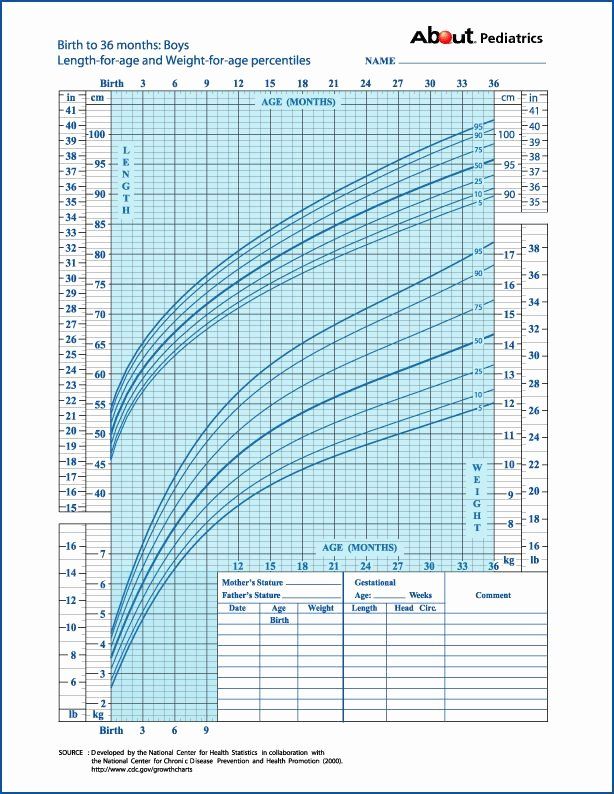 But what to do if the values of the essential have gone beyond the limits of the permissible parameters , or are they at the intersection of norm and pathology?
But what to do if the values of the essential have gone beyond the limits of the permissible parameters , or are they at the intersection of norm and pathology?
Reasons for possible deviations can be divided into two groups:
1. Non-endocrine:
- Constitutional growth retardation . Or in another way, the syndrome of late puberty. One of the variants of the norm, when the puberty jump occurs later than in other children.
- Family stunting . It has a hereditary predisposition, in the family of such children there are relatives with short stature. Growth retardation manifests itself from early childhood.
- Prematurity, intrauterine and postnatal injuries.
- Genetic syndromes . As a rule, they have many clinical manifestations, one of which is growth retardation.
- Chronic diseases of the cardiovascular, bronchopulmonary systems, gastrointestinal tract, as well as anemia.

- Fasting .
- Taking certain medications .
2. Endocrine:
- Growth hormone deficiency . Biologically active substance, which is the main regulator of the growth process after 2 years.
- Deficiency of thyroid hormones . More often of a congenital nature, it is clinically characterized by a delay in physical and intellectual development from birth.
- Type 1 diabetes mellitus . A disease in which, due to insulin deficiency, the flow of glucose into the cells of the body is impaired, the so-called. "starvation" of cells, as a result, growth rates slow down.
- Itsenko-Cushing's disease (or syndrome) . At the same time, the production of hormones of the adrenal cortex, glucocorticoids, is increased, which in large doses leads to a violation of the secretion of growth hormone.
- Rickets .
 A lack of vitamin D leads to bone destruction and skeletal deformities, which in turn is manifested, among other things, by a decrease in growth.
A lack of vitamin D leads to bone destruction and skeletal deformities, which in turn is manifested, among other things, by a decrease in growth. - Other rare disorders of the endocrine system.
As you can see, there are a lot of reasons.
If the child's growth is stunted, parents should consult a doctor to identify the causes of short stature and correct it in a timely manner.
Which specialist should I contact? First, you should make an appointment with a pediatrician. Also, in most cases, consultation with a pediatric endocrinologist is required.
Remember that for the normal growth of the child you need a complete, balanced diet with enough vitamins and minerals, as well as dosed physical activity.
Children's height and weight standards - WHO data
Children's height and weight standards - WHO data
A child's height and weight are parameters that parents are most concerned about. What are the norms of height and weight for children of different ages? We invite you to familiarize yourself with the data of the World Health Organization. Based on large-scale studies, scientists have established normal parameters for the development of children, which can be relied upon.
What are the norms of height and weight for children of different ages? We invite you to familiarize yourself with the data of the World Health Organization. Based on large-scale studies, scientists have established normal parameters for the development of children, which can be relied upon.
The height and weight of a child is the most exciting topic for parents
One of the most common questions that all mothers have is the rate of growth and weight of the child in the first months of the baby's life. Based on the recommended norms, you can understand whether your child is developing correctly and whether it is worth taking him to the doctor. A child's height and weight are important parameters by which parents can evaluate a child's health.
Often, parents are faced with rather conflicting information about what weight and height of a child is normal. Moreover, different doctors may interpret the current indicators in a child in different ways. We hasten to inform you that the World Health Organization has established height and weight standards for boys and girls. This is the most up-to-date data on which to rely when interpreting the parameters of height and weight of children.
We hasten to inform you that the World Health Organization has established height and weight standards for boys and girls. This is the most up-to-date data on which to rely when interpreting the parameters of height and weight of children.
Standards of weight and height of a child, which are widely used today, in fact, do not reflect the real state of affairs - how exactly a child should grow and develop in order for his health to be in the best possible condition. Such data simply shows how the average child grows.
With regard to the standards developed by WHO, these data are more than just reference parameters for height and weight. The WHO tables on the norms of height and weight of children enable parents to determine the optimal values for the physical development of babies, taking into account the weight and height of children of different ages.
Child height and weight: how the norms were set
The 2002 UNICEF and WHO guidelines state that breastfeeding is the best form of feeding for babies. Mother's milk is the ideal food for the healthy growth and development of children. During the first six months, experts from WHO and UNICEF recommend feeding children exclusively with breast milk. After this period, children must receive adequate complementary foods for adequate growth and development. In this case, breastfeeding should continue up to two years or more (at the request of the mother).
Mother's milk is the ideal food for the healthy growth and development of children. During the first six months, experts from WHO and UNICEF recommend feeding children exclusively with breast milk. After this period, children must receive adequate complementary foods for adequate growth and development. In this case, breastfeeding should continue up to two years or more (at the request of the mother).
One of the distinguishing features of modern norms for the development and growth of children is the understanding of breastfeeding as a certain biological norm. A healthy child, not overweight and breastfeeding, was taken as a reference. In this regard, the new norms for the growth and weight of babies differ from those that were adopted on the basis of an analysis of the parameters of all children (who were both breastfed and bottle-fed).
To establish new norms for the development of children's growth, experts examined about 9thousands of children raised in a supportive environment that includes breastfeeding, a healthy diet, and the prevention of infectious diseases and other negative manifestations. Moreover, the mothers of these children refrained from bad habits during pregnancy and breastfeeding. It was a large-scale project sponsored by the World Health Organization and a number of UN non-governmental organizations. As a result of the data obtained, graphs of weight and height were drawn up for boys and girls aged 0 to 10 years. It is noteworthy that these graphs show not only the absolute values of height and weight, but also the relationship with each other, and this ratio is very important for understanding how harmoniously a child develops. WHO tables will help calculate the norm of weight and height of a child.
Moreover, the mothers of these children refrained from bad habits during pregnancy and breastfeeding. It was a large-scale project sponsored by the World Health Organization and a number of UN non-governmental organizations. As a result of the data obtained, graphs of weight and height were drawn up for boys and girls aged 0 to 10 years. It is noteworthy that these graphs show not only the absolute values of height and weight, but also the relationship with each other, and this ratio is very important for understanding how harmoniously a child develops. WHO tables will help calculate the norm of weight and height of a child.
WHO Table No. 1: Height (in cm) and weight (in kg) of boys in the first year of life
By three months, boys grow to 61.4 cm and weigh 6.400 g. Low values will be parameters below 59.4 cm 5.700 g, and high values will be values above 63.5 cm and 7.200 g.
The age of 6 months is considered an important milestone in a child's development. A six-month-old girl should grow to 65.7 cm and weigh 7,300 g.
A six-month-old girl should grow to 65.7 cm and weigh 7,300 g.
WHO Table 3: Height (in cm) of a boy under 10
WHO Table 4: Weight (in kg) of a boy under 10
At 10, boys are normal should reach the parameters of 137.8 cm 31.200 g. Figures less than 131.4 cm and 26.700 g are assessed as low, and figures above 144.2 cm and 37.000 g are considered high.
WHO Chart 5: Girl's height (in cm) under 10
WHO Chart 6: Girl's weight (in kg) under 10
A 10-year-old girl should have an average height of 138.55 cm and a mass of 31.900 g. Data less than 132.2 cm 27.100 g are considered low, and values above 145 cm 38.200 g are considered high.
How to determine the correct height and weight of a child
At home, you can use a home height meter or a measuring tape to change the height of a child. Place the child barefoot on the floor with their back to the ruler. Make sure that the baby's body is straight, and the arms are lowered along the body, the feet are tightly shifted, and the knees are extended. The child's head should be positioned in such a way that the edge of the lower eyelid and the upper edge of the hearing aid are on the same horizontal plane. During the measurement of height, the child should touch the wall with the shoulder blades, buttocks and heels. Find out in our ranking of the top 10 online casinos which gaming clubs withdraw winnings to a bank account. Attach a flat object perpendicular to the stadiometer and mark the height readings on the scale.
Make sure that the baby's body is straight, and the arms are lowered along the body, the feet are tightly shifted, and the knees are extended. The child's head should be positioned in such a way that the edge of the lower eyelid and the upper edge of the hearing aid are on the same horizontal plane. During the measurement of height, the child should touch the wall with the shoulder blades, buttocks and heels. Find out in our ranking of the top 10 online casinos which gaming clubs withdraw winnings to a bank account. Attach a flat object perpendicular to the stadiometer and mark the height readings on the scale.
As for the child's body weight, it is determined on the scales. Most often these are electronic scales. Make sure that the child is in the center of the scales. Depending on the age of the child, you need to weigh him in a lying, sitting or standing position. If you weigh a small child in a diaper, then the weight of the diaper should be subtracted from the total mass. Weigh the child in the morning, before feeding, when the child urinates and empties.
Child's weight: causes of abnormalities
In some cases, the child may have problems with weight. Too much or too little weight can indicate certain problems or specific conditions. In particular, deviations from the norm are possible for the following reasons:
Energy imbalance. The most common reason is getting more calories than you need. This leads to weight gain. And when a child receives fewer calories than he needs to maintain normal life, this, on the contrary, leads to weight loss. Children who eat food that is equivalent in energy balance to their lifestyle do not have weight problems. Thus, the main causes of abnormal body weight are: increased food intake, malnutrition or low physical activity.
Diseases. In some cases, weight problems are possible due to the development of certain diseases and disorders, for example, when the hormonal background changes, when the metabolism is disturbed.
The most common problem for parents is overfeeding a child when he does not want to eat, but he is forced to.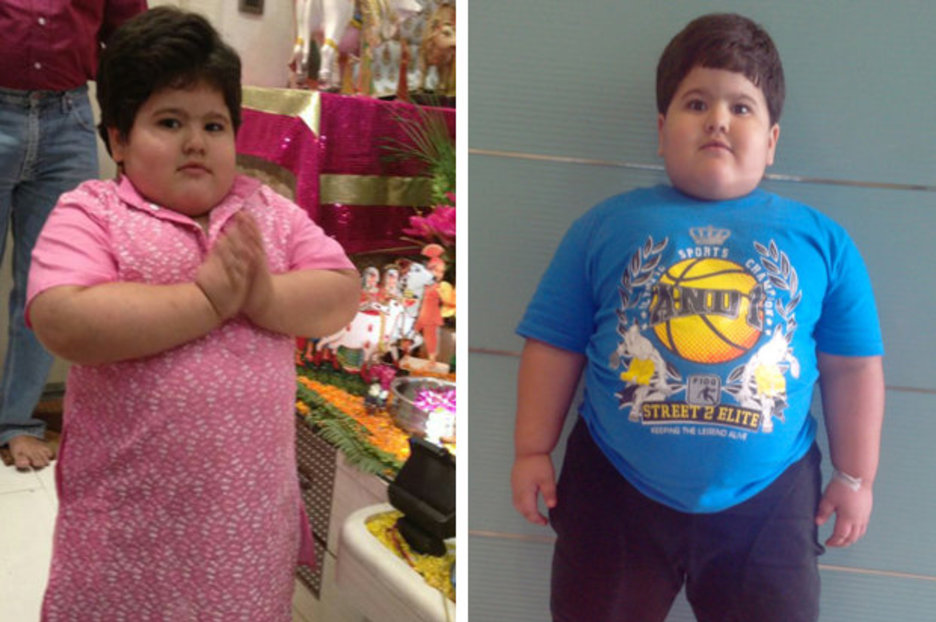
 1 kg)
1 kg) 3 cm)
3 cm) 6 kg)
6 kg)